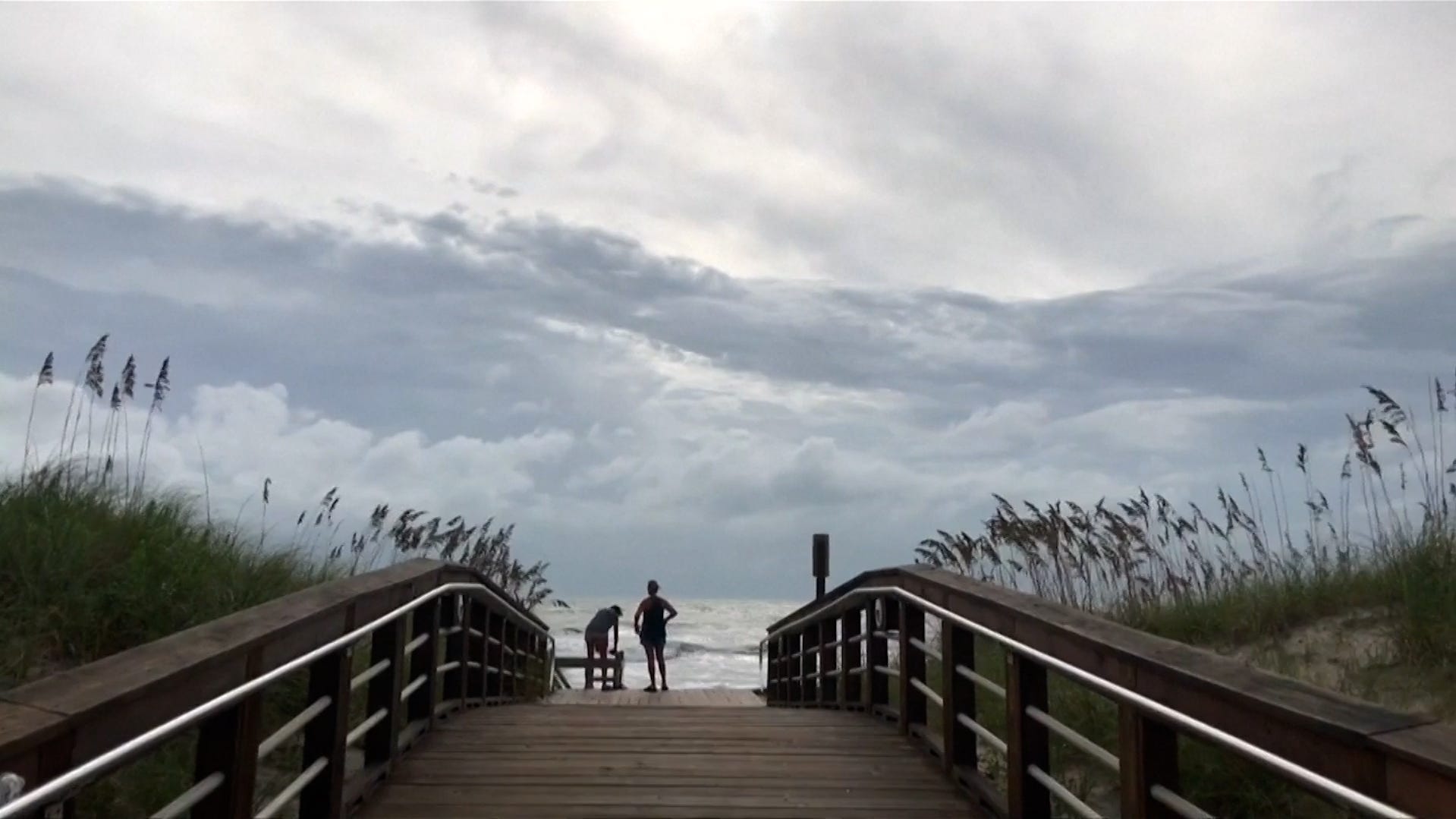Storm tracker: System could bring heavy rainfall to Florida

Portions of Florida and the northern Gulf Coast could see some heavy rainfall due to an area of low pressure currently located off the coast of northeastern Florida.
The National Hurricane Center said in a July 23 advisory that the trough of low pressure is "associated with a broad area of disorganized showers and thunderstorms."
Hurricane center forecasters said the system is expected to move west-southwestward into the north-central Gulf, where environmental conditions could allow for some slow development of the system.
"By this weekend, the system is likely to move inland, ending its chances for development," the NHC said in the advisory. "Regardless of formation, heavy rainfall could be possible for portions of Florida over the next day or so, and for the northern Gulf Coast through this weekend."
The hurricane center gives the system a 10% chance of formation through the next seven days.
NHC keeping tabs on another system in the Pacific
The NHC also said in its July 23 advisory it is keeping an eye on another area of low pressure that is expected to form well southeast of the Hawaiian Islands this weekend.
Hurricane center forecasters said some gradual development is possible thereafter as the system moves generally westward at 10 to 15 mph. Forecasters give this system a 20% chance of formation through the next seven days.
Storm tracker
This forecast track shows the most likely path of the center of the storm. It does not illustrate the full width of the storm or its impacts, and the center of the storm is likely to travel outside the cone up to 33% of the time.
How do hurricanes form?
Hurricanes are born in the tropics, above warm water. Clusters of thunderstorms can develop over the ocean when water temperatures exceed 80 degrees Fahrenheit. If conditions are right, the clusters swirl into a storm known as a tropical wave or tropical depression.
A tropical depression becomes a named tropical storm once its sustained wind speeds reaches 39 miles per hour. When its winds reach 74 mph, the storm officially becomes a hurricane.
Prepare now for hurricanes
Delaying potentially life-saving preparations could mean waiting until it’s too late. "Get your disaster supplies while the shelves are still stocked, and get that insurance checkup early, as flood insurance requires a 30-day waiting period," NOAA recommends.
- Develop an evacuation plan: If you are at risk from hurricanes, you need an evacuation plan. Now is the time to begin planning where you would go and how you would get there.
- Assemble disaster supplies: Whether you’re evacuating or sheltering-in-place, you’re going to need supplies not just to get through the storm but for the potentially lengthy aftermath, NOAA said.
- Get an insurance checkup and document your possessions: Contact your insurance company or agent now and ask for an insurance check-up to make sure you have enough insurance to repair or even replace your home and/or belongings. Remember, home and renters insurance doesn’t cover flooding, so you’ll need a separate policy for it. Flood insurance is available through your company, agent, or the National Flood Insurance Program. Act now, as flood insurance requires a 30-day waiting period.
- Create a family communication plan: NOAA said to take the time now to write down your hurricane plan, and share it with your family. Determine family meeting places, and make sure to include an out-of-town location in case of evacuation.
- Strengthen your home: Now is the time to improve your home’s ability to withstand hurricane impacts. Trim trees; install storm shutters, accordion shutters, and/or impact glass; seal outside wall openings.
Gabe Hauari is a national trending news reporter at Paste BN. You can follow him on X @GabeHauari or email him at Gdhauari@gannett.com.